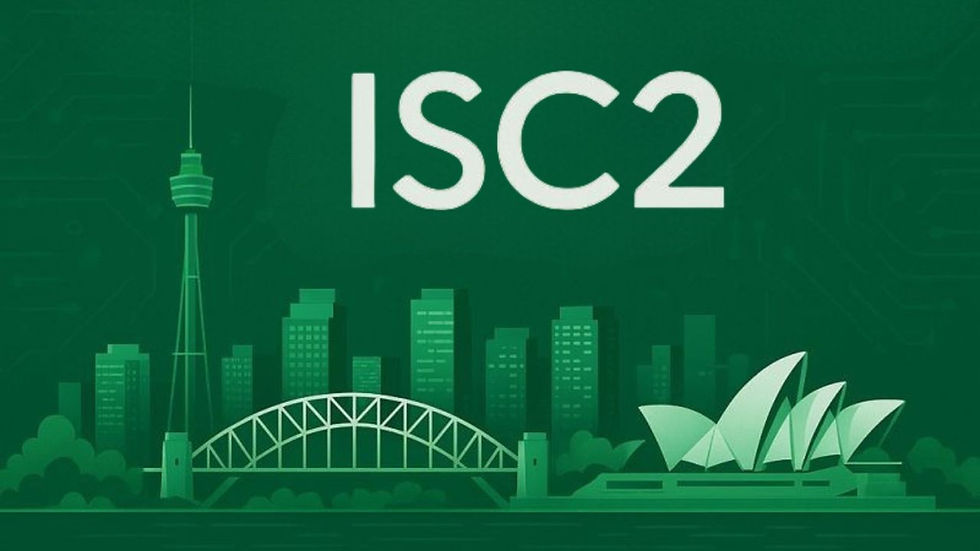The Future of AI is in the Classroom: Australia's Strategic Advantage in the Global AI Race with Rezza Moieni
- Juan Allan
- Sep 25
- 5 min read
Rezza Moieni on AI growth in Australia, ethical challenges, and the critical role of education. A technologist's vision for a diverse, AI-fluent future

A nation's ability to thrive in the age of AI will be determined not by its adoption speed, but by its foundational strength in education and ethical governance.
In this interview, we talk about this with Rezza Moieni, CTO and Project Director at Diversity Atlas, a technologist with 25 years of experience at the intersection of AI, culture, and education. As Australia navigates the immense potential and pitfalls of emerging technologies, Rezza argues that the real growth story isn't about which sector (health, mining, or finance) wins the AI race. Instead, the most critical, high-leverage investment is in cultivating an AI-fluent and ethically-grounded society from the ground up.
Drawing from his recent TEDx talk and work with UNESCO, Rezza provides a compelling vision for how Australia can avoid the fragility of mere adoption and build a future where technological advancement is synonymous with diversity, inclusion, and sustained social value.
Interview with Rezza Moieni
What are the main factors driving the growth of AI and emerging technologies in Australia compared to other global markets?
I’ve been working in the tech sector and as a technologist for all my career in the last 25 years. Twenty years ago, almost every tech product had a software layer; over the next three years that layer will routinely include AI, from CRMs and chatbots to cars, media pipelines and security systems. That shift makes AI adoption inevitable.
Australia’s growth is being driven by a few clear advantages: coordinated government strategy and funding, mature cloud and digital foundations that ease integration, strong research–industry links (universities, CSIRO/Data61 and applied labs), and intense sector demand in health, mining, agri-tech, fin-tech and professional services that create high-value use cases. In my opinion, the main constraint is people and trust: skills shortages and public governance concerns will determine whether we merely adopt AI or actually capture sustained economic and social value.
What barriers do Australian businesses face when adopting AI, such as cost, talent shortages, or integration with legacy systems?
Australian businesses face a familiar set of adoption barriers: up-front cost vs uncertain ROI, a shortage of skilled ML/AI engineers/data engineers and MLOps practitioners, siloed data, and the headache of retrofitting AI into legacy systems and procurement processes that weren’t built for continuous model updates. This is very clear in the financial, infrastructure and health sectors, where legacy systems are critical systems.
Low AI literacy in leadership, risk-averse procurement, and regulatory/privacy concerns delay projects that would otherwise scale quickly.
A further, strategic risk is that much of Australia’s activity is focused on applied AI (deploying and integrating external models) rather than on advancing new computational methods. That makes us efficient at short-term value capture but increases fragility if foundational trends shift or if supply chains for models become constrained. To succeed you need stronger data and MLOps foundations, targeted upskilling and university–industry partnerships, modular architectures (to avoid vendor lock-in), and clearer governance so organisations can both adopt quickly and pivot when the tech landscape changes.
How is Australia addressing the AI skills gap, and what strategies are being implemented to prepare the workforce for AI-driven industries?
Australia is well placed to close the AI skills gap because we already have world-class universities (Victoria is rightly proud to call itself “the education state”) and a concentration of major tech head offices and graduate programs here that recruit and train talent straight out of campus. Those university–industry pipelines—plus strong postgraduate offerings and industry-funded research labs—create a steady flow of graduates who understand both theory and real-world product delivery.
But classroom output alone isn’t enough. Australia is combining that supply with targeted strategies: employer-run graduate and cadet programs, micro-credentials and short courses for rapid reskilling, TAFE and bootcamp pathways for practical tech roles, public funding for upskilling and university–industry collaborative projects, and a push to embed data literacy and ethics into curricula.
To make this stick we need stronger MLOps/data-engineering training, work-integrated learning (internships, apprenticeships), and incentives for lifelong learning so organisations can both hire and continuously upskill the people they already have.
How is Australia balancing innovation with ethical concerns in AI, such as data privacy, algorithmic bias, and responsible use?
Australia has a reputation for its multiculturalism and intercultural approach, and a robust, scientific understanding of diversity should be the starting point for any ethical AI conversation. In my recent TEDx talk I pointed out the difference between searching the web (you get many voices to choose between) and an AI that has already skimmed the whole internet and returns one narrative: the critical question becomes whose voice is amplified.
That tension—between innovation and representation—is central here, and it’s why organisations increasingly hire AI-Ethicists to keep product design accountable and inclusive. For many years I have been focused on bringing rigour to a collective understanding of cultural diversity, and recently co-authored a technical paper for UNESCO'S MONDIACULT Digital Library that proposes scientific definitions for culture, cultural identity and cultural diversity.
Many organisations understandably flounder with these concepts and everyone is spending unwarranted resources trying to navigate this area. The work I've done with my organisation Cultural Infusion can support people and organisations seeking to work ethically with inclusive product design with minimum effort on their part.
Practically, balancing innovation with ethics means three things happening now: stronger governance at the organisational level (bias testing, explainability, human-in-the-loop controls and AI impact statements), broader public and industry consultation about “red lines” (from data privacy to acceptable use), and investment in diverse data, ethics research and workforce roles that can operationalise fairness.
The conversation about treaties or national guardrails is healthy—it shows Australia is asking the right questions. If we pair rapid experimentation with transparent safeguards, inclusive datasets and clear accountability, we can capture AI’s benefits without letting a single, unvetted narrative drown out minority voices.
What role should the Australian government play in regulating AI while still encouraging innovation and investment?
No single government can set the rules for AI alone. International coordination is essential but hard (the Budapest Convention on cybercrime showed how different views on speech, sovereignty and security can block global agreements). At the same time, today’s intense commercial competition for AI, compute, models and talent (big recent partnerships between vendors and model-builders illustrate that concentration) makes global alignment even more difficult . Private incentives and national industrial strategy often pull in different directions.
So Australia’s pragmatic role should be threefold:
Set clear, risk-based guardrails and public-sector assurance so organisations and citizens know the rules (Australia already has national AI policy work and an AI assurance framework for government).
Accelerate innovation through targeted funding, regulatory sandboxes, procurement that favours trustworthy systems and support for SMEs so the market stays competitive.
Lead and push for interoperable international norms (OECD-style principles are a useful starting point) while using foreign policy to bridge differences where possible.
That mix — clear domestic rules + pro-innovation levers + active diplomacy—gives Australia the best chance to protect citizens, attract investment and remain agile as the global AI landscape shifts.
Which sectors in Australia, such as healthcare, mining, or finance, are expected to benefit most from AI adoption over the next decade?
There isn’t a single “winner” sector—healthcare, mining, finance, agri-tech and others will all gain from AI. But the old analogy applies: a chain is only as strong as its weakest link, and the smartest way to future-proof every industry is to focus on the place that shapes people and norms—education. Right now, investing in how we teach, assess and acculturate young people offers outsized, long-term leverage for the whole economy.
Gen Z and younger cohorts are already wired and socialised differently: they consume, learn and decide in connected, algorithmic environments. If we prioritise AI-fluent education—personalised learning, teacher augmentation, ethics and AI literacy, transparent assessment and digital-citizenship—we build a workforce and society that demand explainability, inclusiveness and accountability. At Cultural Infusion, our motto is, effectively, “only diversified we grow”—and by placing education first we give every sector a stronger, fairer foundation to adopt AI responsibly and sustainably.



Comments